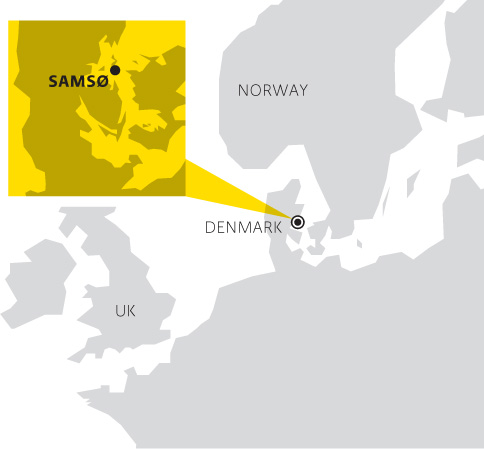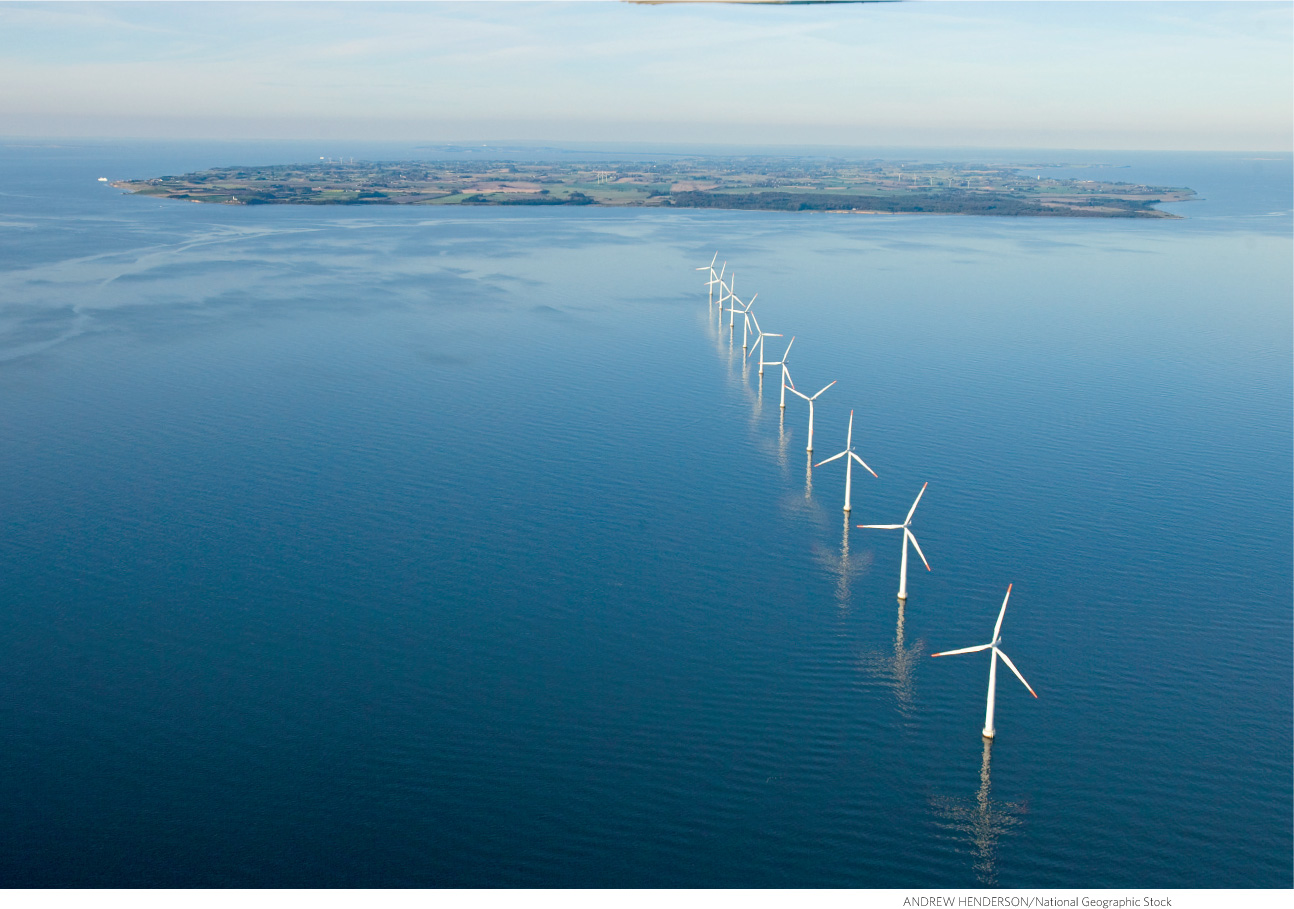Sustainable ecosystems and societies rely on renewable energy.
Samsø used to be just like most other communities on Earth: fully dependent on fossil fuels like coal, oil, and gas. As recently as 1998, Samsø imported all of its energy resources from the mainland: Tankers hauled oil into its ports, and the island imported electricity generated from burning coal via cables.
But in 1997, the government of Denmark decided it was important to promote the idea of renewable energy, energy from sources that are replenished over short time scales or that are perpetually available. To do so, it announced a competition: Which local area or island could become self-sufficient on renewable energy? The contest invited applicants to describe which renewable resources were available in their community and how they would be used to replace fossil fuels.
renewable energy
Energy from sources that are replenished over short time scales or that are perpetually available.

The purpose of the contest was to put communities on track to be more sustainable. To qualify as a sustainable energy source, the energy must be renewable, with a low enough environmental impact that it could be used for the long term. As a result, any source of energy that causes environmental damage when it is captured or produced, such as damaging habitat or generating pollution, was not ideal. For example, experts continue to debate the value of “clean coal”; this type of coal does burn more cleanly than typical coal, but it causes environmental damage when it is extracted and requires a lot of energy to process into a cleaner fuel—while still generating toxic waste (see Chapter 18).
sustainable energy
Energy from sources that are renewable and have a low environmental impact.
KEY CONCEPT 23.1
Sustainable energy sources are those that meet our needs, have acceptable impacts, and are readily replenished.

Even though Samsø is small—about 26 kilometers (16 miles) long and only 7 kilometers (4 miles) at its widest—it has plenty of the natural resources that are becoming increasingly important sources of sustainable energy. A small firm put together an application for the contest, and the little island won.